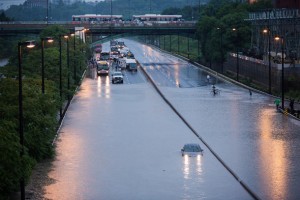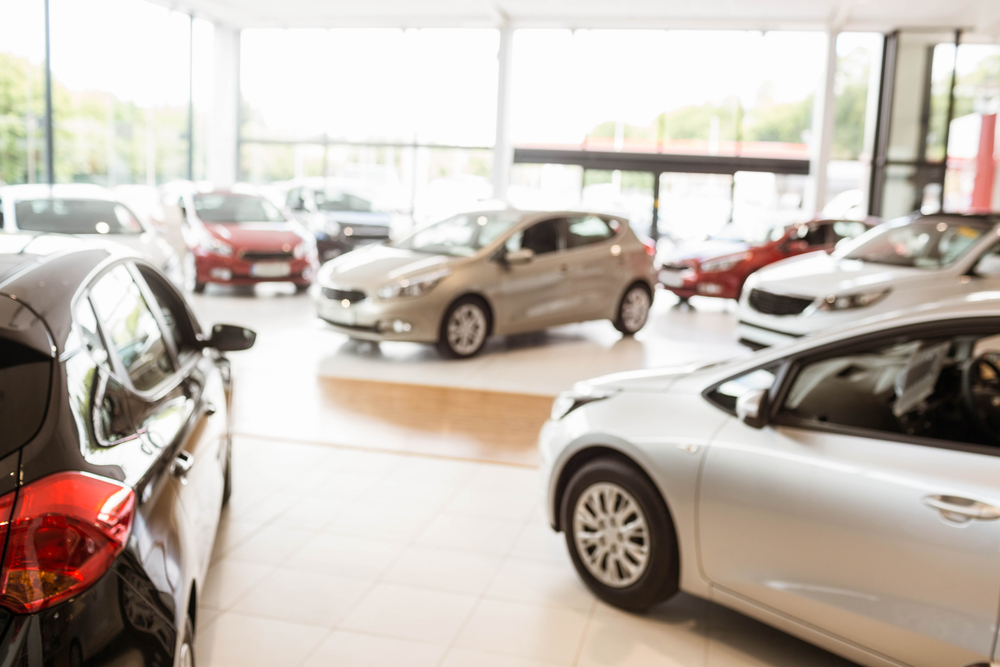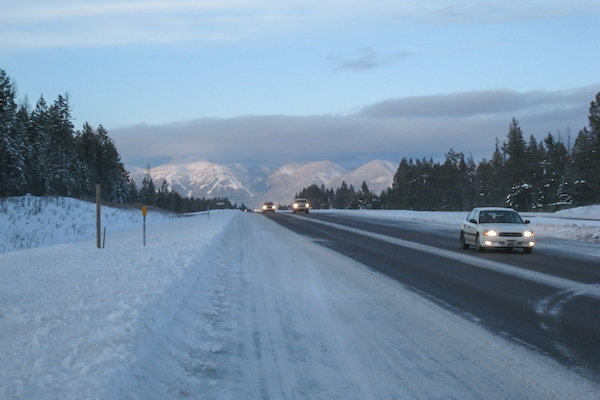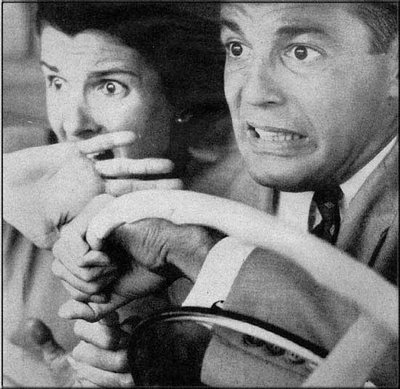How to Survive the Drive Through Rough Summer Weather
When a severe storm hits your city, assuming you’re at home, it is usually not a big deal. Sure, the power could go out for a while, depriving you of Netflix and fully-microwaved popcorn. If you appreciate nature, though, you’ll just sit back and watch the lightning show. However, it’s a different story when you’re driving through it. In fact, it can be quite dangerous, and you might run into trouble if you’re not prepared for the highway weather conditions affecting your route. That’s why it’s important for you to recognize summertime hazards such as severe weather, and learn how to stay safe no matter what the skies are cooking. Doing so can prevent a weather-related accident.
could go out for a while, depriving you of Netflix and fully-microwaved popcorn. If you appreciate nature, though, you’ll just sit back and watch the lightning show. However, it’s a different story when you’re driving through it. In fact, it can be quite dangerous, and you might run into trouble if you’re not prepared for the highway weather conditions affecting your route. That’s why it’s important for you to recognize summertime hazards such as severe weather, and learn how to stay safe no matter what the skies are cooking. Doing so can prevent a weather-related accident.
The Many Faces of Severe Summer Weather
You’re most likely familiar with severe weather in the summer, because you’ve seen it and even felt it. Dark clouds hover over the horizon, while a cool, calm breeze rustles the grass and trees. And for some of you, there are headaches and bodily pains (due to barometric changes). But there are various forms of bad weather that not only make driving a hassle, but also dangerous.
Nature Acting Up
- Thunderstorms – The booming echoes of thunder, and dazzling flashes of lighting are both exciting and frightening. There are usually heavy downpours of rain as well, which reduces visibility and makes roads slippery. They usually pass fairly quickly, but their brief lifespan is enough to make many drivers panic and act irrationally (which leads to accidents).
- Hail – Those frozen “ice cubes”, which sometimes reach the size of a golf ball, often fall during severe thunderstorms. Generally, hail comes down as little ice pellets that audibly strike windows and surfaces, but do little damage. On occasion, large hailstones crack windows, and leave deep dents on car exteriors. They’ve even been known to cause physical injury and death.
- Heavy rain & flooding – Back in June 2013, a massive rainstorm hit the Greater Toronto Area, leading to severe flooding in several municipalities. You might remember some of the sights. Highways and cars were submerged under water, trains stopped working, and thousands of people were stranded. The storm was one example of how easily a major city could come to a standstill with just an hour or so of heavy rain.
- Intense wind – Freak winds are more than a nuisance. It sure is annoying if you can’t walk straight, but intense winds snap trees, send objects flying, and even make it difficult for planes to land. You’ve probably felt your car waver in strong wind, and you may have even swerved to avoid debris that almost struck your car. Such strong currents usually come about with thunderstorms that are severe in nature.
- Thick fog – Thick, blinding fog is rare, but it can strike you when driving in the summer. In many cases, heavy downpours and thunderstorms will create these foggy conditions. The mere fact that you literally can’t see anything in front of you, makes it a dangerous situation to be in. Multiple car pileups and a crawling traffic pace often result in the presence of thick fog.
Hurricanes and tornadoes should fit that list, but it’s unlikely you would actively drive during these extreme conditions (storm chasers not included). If you were to get such warnings, the smart thing would be to leave town, or run and hide in the basement!
Caught by Surprise: Safe Driving in Sudden Severe Weather
Let’s say you run into bad weather. Murphy’s Law is in effect – you’re driving on a route you’re unfamiliar with and running late. You know you can’t drive the same way you would on a cloudless day, and at the same time, you’re panicking a bit. All of this is normal. But you can get over the nerves and arrive at your destination without any troubles if you’re doing the right thing.
Use all necessary safety features
Switch your safety features on when bad weather strikes.
- Turn your fog lights on – Using fog lights in dangerous weather is a lifesaving practice.
 They are a necessity during heavy fog and rainstorms, which will likely reduce your visibility.
They are a necessity during heavy fog and rainstorms, which will likely reduce your visibility.
- Use your windshield wipers – Again, using your windshield wipers shouldn’t be a second thought. In the presence of heavy rain, you’ll need to see clearly, and only your wipers will allow you to do that.
- Rely on sensors/detection systems – Thanks to the wave of new detection systems out there, your drive can be even safer during bad weather. If your car has features such as blind spot monitoring, night vision warnings and lane departure, use them to your advantage. They can all elevate your safety in dangerous conditions.
Use defensive driving techniques
Safety features alone won’t help. You also need to put your defensive driving techniques to use.
- Slow down – When driving in rain or fog, you must reduce your speed. In the case of rain, driving too fast makes braking dangerous, because you could hydroplane (skid before coming to a stop) if there’s a sudden need to stop. With fog, it’s vital that you slow down since visibility is low, and you can’t see what’s in front of you too well.
- Avoid driving in flooded areas – If you like driving through puddles to splash pedestrians, stop. It’s rude, and damaging to your brakes and engine. Drive around pools of water. And if you can’t safely do so, perhaps due to heavy flooding, drive slowly through the water and in a low gear. As a side note, it’s wise to have your brakes tested after driving in flooded areas since water can render them less effective.
- Refrain from making wild turns – You might get away with making risky turns on a clear day. Pull off those same moves on wet and slippery roads, and you could be toast. It’s essential that you drive the way you we’re taught in bad weather, obeying all the rules to keep safe. When nature acts up, looking cool means nothing when behind the wheel.
- Watch out for reckless drivers – There’s a strong likelihood, that you’ll come across some drivers who speed and swerve in and out of traffic in stormy conditions. As brainless as they might be, you have to remain on the lookout for them to stay out of their way. Making that effort can prevent you from getting into a catastrophic accident.
Pull over if necessary
If conditions get really bad, you will have to pull over. It usually won’t be for too long.
- Find a safe place – Sometimes, the best thing to do in a severe storm, is to pull over. For example, if there’s a parking lot nearby, you can stop there momentarily, until the visibility is better or the precipitation calms down.
- Find shelter if possible – If you’re worried about hail and debris from heavy winds, consider
 finding shelter. That could be at a mall or a friend who lives nearby. It’s a good idea to make a list of places you could stop at in a weather emergency beforehand, so that you’re not left scrambling when the real deal takes place.
finding shelter. That could be at a mall or a friend who lives nearby. It’s a good idea to make a list of places you could stop at in a weather emergency beforehand, so that you’re not left scrambling when the real deal takes place.
The Calm Before the Storm
Going off the last point in the previous section, you should take your car in for some serious TLC. Give your vehicle the servicing it needs, so that it takes good care of you when poor weather strikes. Visiting a licensed mechanic is always the best move to make. The last thing you want is to drive into a storm, blinded and ill-prepared to the conditions around you.
Pre-storm maintenance checklist
- Test brakes regularly
- Keep tires properly inflated
- Use weather/season-appropriate tires
- Replace headlamp/tail light bulbs IMMEDIATELY if burned out
- Test windshield wipers – Replace IMMEDIATELY if not working
- Consider buying a hail blanket (if you must park outside in a hailstorm)
- Buy and carry an emergency kit (not only useful for winter)
Shield Yourself from Nature this Summer
Unless you’ve got the powers of a Greek God, you can’t stop nature and the fury it unleashes. However, you can take steps to remain safe when extreme summer weather takes place. It’s all about preparation. First of all, you need to ensure that your car is in working order. You will be a heck of a lot safer on the road if all your car’s safety features are functional. Additionally, it’s important that you learn how to respond if highway weather conditions make a sudden turn for the worst. Finally, if you’re about to head out but hear about approaching storms that could turn ugly, stay home! There’s no need to throw yourself or your passengers in harm’s way.






